4th Of July Ecommerce Facts & Strategies That Win Over Customers for Life
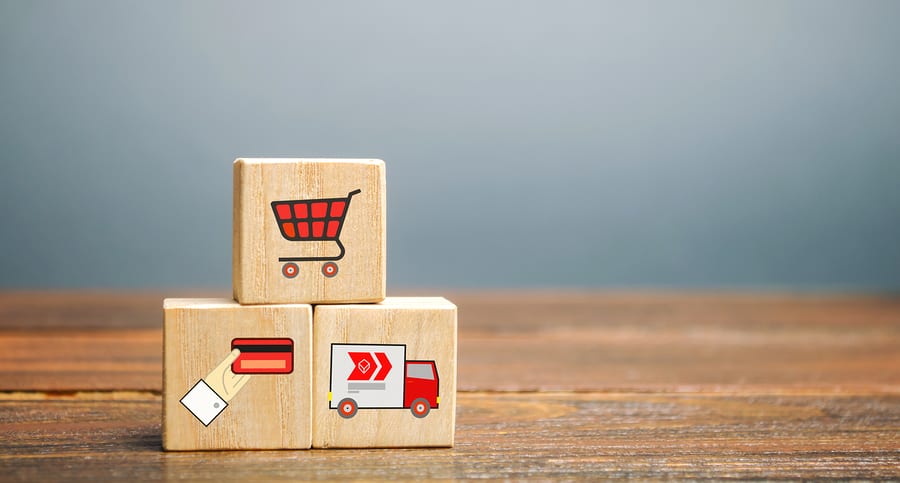
Summer is in full-swing, and it might seem like it’s way too early to start prepping for the holiday shopping season. As it turns out, though, waiting could be a major mistake.
In recent years, the holiday shopping rush has gotten earlier and earlier. According to the National Retail Federation, 4% of consumers start shopping for holiday gifts in October, 29% start in September and 5% start even earlier than that – during the summer months!
As such, it’s never too early to start preparing.
With Amazon running Prime Day in the middle of July, and with more retailers gearing up for the pre-holiday and holiday shopping rushes, it’s essential to keep ecommerce holiday marketing on your mind all year round.
Here’s what you need to know to prepare (as early as possible) for this year’s big shopping season.
The Effect of a Changing Consumer
While the holiday shopping seasons have gotten earlier, they’ve also gotten larger. According to the National Retail Federation, an estimated 20%-40% of yearly sales for SMBs take place in the last two months of the year, and holiday ecommerce sales grew 18% in 2018, per a report by Internet Retailer.
As you prepare for the holiday shopping season, it’s also worth considering the other seasons that go hand-in-hand with holiday shopping. Namely, returns season (which runs from December to January), party season, which runs from January into February, and the season for holiday promotions: March, April and May.
Don’t quite believe those months will be your big hitters?
Consider the fact that St. Patrick’s Day recently reached the highest level of spending in the entire 14-year history of the National Retail Federation.
As you move through your holiday preparations, make sure not to forget about Black Friday and Cyber Monday! Don’t dedicate all your time to them, though. While they remain important shopping holidays, they’re no longer the primary events to focus on.
Appealing to Loyal Customers
Loyal customers are the backbone of ecommerce businesses, driving a majority of the revenue (23.5%) while also being the least expensive to market to.
They also do their own marketing by word-of-mouth referrals to friends and family, plus sometimes by advocating on social media or on other public channels, making them even important for holiday sales like an ecommerce 4th of July flash sale. This is amplified when e-tailers implement loyalty programs that reward customers for shopping and for referring others to the brand—it’s a win-win.
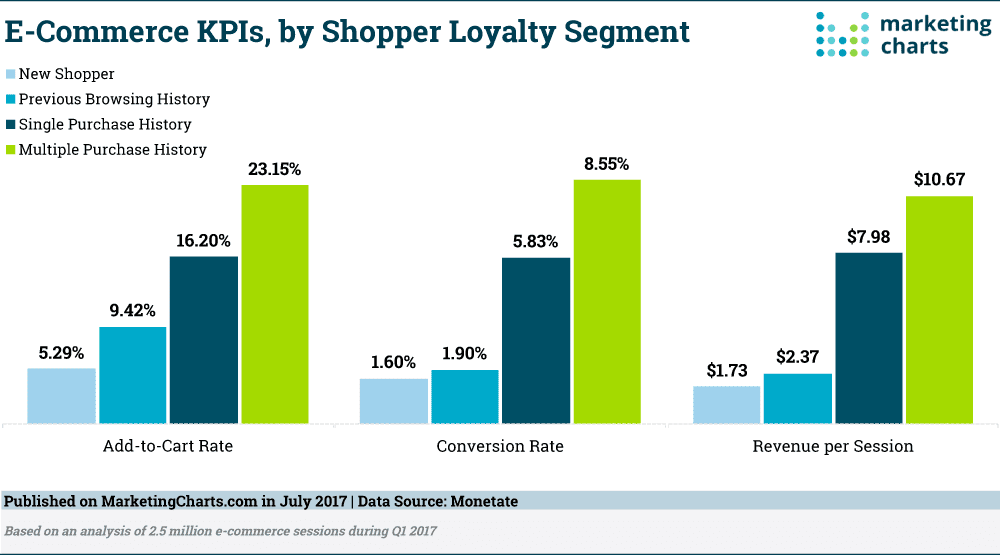
As you can see, loyal customers are an invaluable resource, but how do you capture everyday consumers and turn them into brand advocates? Doing so can help you convert one-time customers this summer into repeat purchases that span through the seasonal shopping rush in December.
Improving customer loyalty takes a top-to-bottom approach. Instead of zeroing in on the sale, take a step back and look at the entire customer journey. A more holistic view will reveal areas that can use improvement, so you end up with an optimized shopping experience and a ton of customers who are loyal to your brand for years to come.
The Customer Journey, Defined
The concept of the customer journey was introduced by OxfordSM as part of the Eurostar development more than 20 years ago, but it’s surprisingly not all that popular in the business world.
Econsultancy research found that 50% of organizations have not put effort into understanding their own customer journeys, meaning that you can get ahead of at least half of your competitors by diving into this process early, such as in July, well before the bulk of the shopping season gets underway.

In short, the customer journey is the entire scope of a customer’s experience with a brand. It covers everything from initial discovery (awareness) to loyalty and, when mapped, shows a circle or infinity symbol—a shape without a defined end.
Customer Journey vs. Customer Experience
Another term that comes up when discussing the customer journey is “customer experience,” which ties in but is not the same concept. This is especially true when trying to make your ecommerce independence day sales stand out to consumers.
The easy way to remember the difference is this: The customer journey is based on action, and the customer experience is based on emotion. How the customer feels at each point of the journey is the basis of their experience, so improvements to the customer journey will also improve the experience.
In turn, customers will be more loyal to your brand, which gives them a positive experience. This is why 86% percent of consumers are willing to pay more for products if the brand has excellent customer service. Increased loyalty and spending are two benefits of an improved customer journey… but, how do you know where to start making those improvements? It starts with mapping the customer journey.
Improving 4th of July Ecommerce Sales
There’s still time to improve your ecommerce 4th of July sales strategy. We’ve compiled a list of the best methods you can undertake now to get the biggest results. We’ll also give you five expert tips after this that can enable you to retain these customers and improve loyalty long after they’ve placed their first holiday order.
1. Conduct Market Research
Consumer shopping habits are changing every second, and it’s never safe to assume that the approach you took last year will work this year. Instead, you’ve got to take a proactive approach to get the best possible results for each season.
With this in mind, look at the data and market statistics in your industry and pull together some information about how your target customers intend to purchase this year. The National Retail Federation’s Holiday Headquarters is a great place to find projections about the upcoming holiday season as well as data on past shopping season.
2. Hone Your Marketing Plan
Take some time now to define your marketing goals, lay out areas you want to emphasize, create a budget, and sketch out your plans for breaking into new types of marketing, like online advertisements or print placements.
Once you’ve done this, it’s time to develop a marketing calendar. Having a bulletproof content calendar is especially important during the holiday shopping season, as planning is everything.
In 2016, for example, Hanukkah started on Christmas Eve. This provided a larger sales window for retailers selling Hanukkah gifts and offered an essential opportunity for publicity. Retailers who hadn’t plotted their calendars in advance would have missed the opportunity, and would have suffered lower bottom lines as a result.
Create your content calendar by working backward from big holiday dates to determine what you want to focus on and when the material associated with it should go live. This allows you to take a proactive approach to holiday marketing, and ensures you’re hitting all your major dates just right
3. Develop Marketing Materials
Flesh out your holiday marketing plan by taking some time to develop marketing materials right now. Being proactive in your marketing and advertising materials has several major benefits.
- First, it prevents the end-of-year rush.
- Secondly, you’ll have an easier time finding graphic designers, copywriters, and other specialists to help you.
- Third, you’ll also have plenty of time to fine-tune created materials and plan holiday PR pushes.
4. Look at Previous Campaigns
Knock your sales out of the park this year by taking an honest look at how well you did last year. Ideally, you’ve tracked your results with marketing codes, analytics, or other tools, and you know what worked and what didn’t.
If you look back at these things and notice that one type of marketing was ineffective, scrap the approach and create a new plan for the upcoming shopping season. (Hint-hint: ReadyCloud’s robust reporting and cross-channel data give you immediate insights into the seasonality of your sales, your customer buying habits, trends and more, so you can make the most of this year’s shopping season).
5. Make a Promotion Plan
If you’re interested in promoting products or services, now is the time to consider which items you’ll focus on and make a plan for when you’ll push them.
The best way to approach this is to consider which of your products would naturally see a boost in sales around the holiday season. From there, you can develop a plan for how and when to promote the items that will be your holiday’s hottest sellers.
Why Map the Customer Journey?
As your holiday sales start to stream in, make sure you use this data to your advantage, so you can generate future sales by fine-tuning your method.
This is why customer journey mapping is the top strategy used by CX executives to optimize how shoppers experience a brand, and it can add a 4-15% lift when combined with a solid operations infrastructure.
There are three main reasons to map the customer journey: To get a better return on your marketing investment; To decrease customer service costs; To decrease the length of the sales cycle.
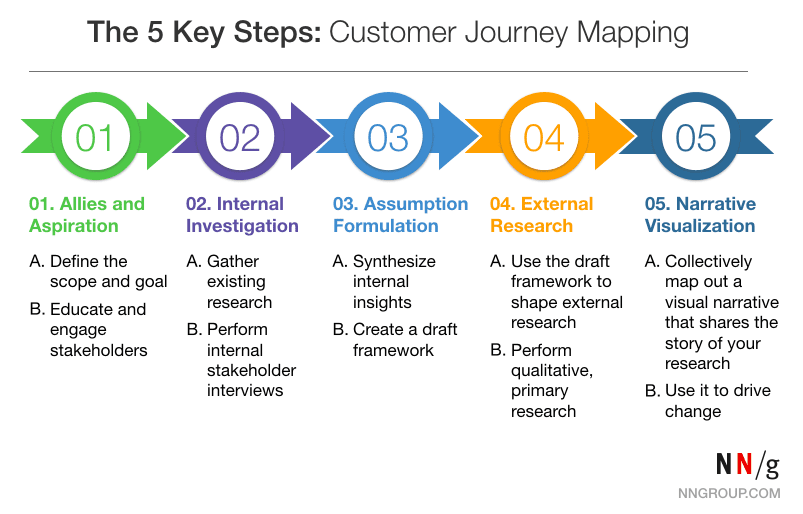
Mapping the customer journey will increase your overall efficiency in regards to time and money, so your ecommerce business runs like a well-oiled machine. Think tanks argue about the best way to map the customer journey, so research will show different steps to take. The following is simply a basic breakdown of what experts recommend.
Step 1: Visualize the Customer Lifecycle
Start with drawing out the customer lifecycle from their point of view. All customer-facing messaging and experiences are important and influence how somebody will interact with the brand.
For online retailers, this includes the marketing, website browsing, checkout and post-purchase activities. It may be helpful to undergo this experience yourself, as if you were a shopper at your own store. This can reveal some areas of improvement, but the better strategy is to collect customer feedback.
For some reason only 20% of businesses currently ask for customer feedback, which means there is a huge opportunity to take advantage and gain valuable insight into the steps a customer takes to make a purchase by asking for product and site reviews post-purchase.
Step 2: Identify Where Your Goals Align
Defining your business goals is a practice that should be revisited on a regular basis in order to improve your marketing messaging and overall have a better, more focused direction.
If you haven’t already decided on some specific goals, do so as soon as possible. That way, you can put them side-by-side with your notes on the customer journey (especially feedback) and see where your goals align with the customer’s.
For example, let’s say a shoe brand has a goal of offering at least three new styles per month. Customer feedback reveals that shoppers found the brand because they want to stay up-to-date with shoe styles. This shows the brand’s goal of refreshing its catalog aligns with the shoppers’ goal of staying trendy.
Maks sure your marketing and customer-facing communication focus on those catalog updates, because that’s what speaks to the brand’s customers.
Step 3: Find the Touchpoints
Touchpoints are the activities that facilitate a consumer/brand interaction, such as social media engagement or signing up for an email list. Webloyalty and Comulino research reveals that the average consumer uses four or five touchpoints before buying a product, and roughly half of them use at least three.
This is a stark change from the average of two touchpoints shoppers used fifteen years ago.
Identifying the touchpoints should be fairly simple after experiencing the customer journey yourself and after collecting customer feedback. You’ll see where and how these interactions are happening, so you can ensure your messaging is clear and optimized, and you’ll be able to allocate resources more wisely.
Step 4: Strategize to Meet Customer Expectations
Before mapping the customer journey, there are inevitably going to be gaps between how the customer expects to experience a brand and how that experience is realized in reality.
Perhaps one of the touchpoints seems off-brand or the checkout process is cumbersome after the easy navigation of the website. These are simply small snags that can be handled with a little strategizing.
Once again, the business goals and customer feedback are incredibly valuable because they provide defined parameters. Then, you can make the necessary tweaks and bridge those gaps, which also help you reduce cart abandonment rates at your online store.
How Mapping Benefits Your Business
Understanding the customer journey is getting insight into how future shoppers will turn into loyal customers. Essentially, it’s a way to predict a consumer’s next move. That’s why 69% of businesses plan to prioritize investing in customer journey mapping and why their marketers want to make it a focus for the next two years.
The numbers don’t lie. A recent Aberdeen survey found that brands that had formally mapped the customer journey were enjoying increased sales, more effective marketing and improved customer service.
Specifically, revenue attributed to marketing activities increased by nearly 25% year-over-year, and service costs were reduced by 21%. Those organizations also saw an 18X faster sales cycle, a 5X increase in customer referral revenue and a 56% increase in cross-sell and upsell revenue.

Aberdeen’s study also revealed only 36% of businesses have clearly defined a process to help them map the customer journey, so now is the time to make moves. You can map it then make improvements so incoming shoppers become loyal customers with lengthy customer lifetimes.
Quick Tips to Improve the Customer Journey
Forrester research shows companies that invest in the customer journey grow 14% faster than those that don’t, so even simple tweaks can make a world of difference. Take these five tips to improve your customer journey:
1. Boost Your Site’s Speed
Per Hubspot, 79% of shoppers won’t revisit an online store after a poor experience with its website performance because slow website speed kills sales. Get rid of bulky plugins and switch to a website host with faster loading times for a sleeker, more efficient digital storefront that appeals to customers.
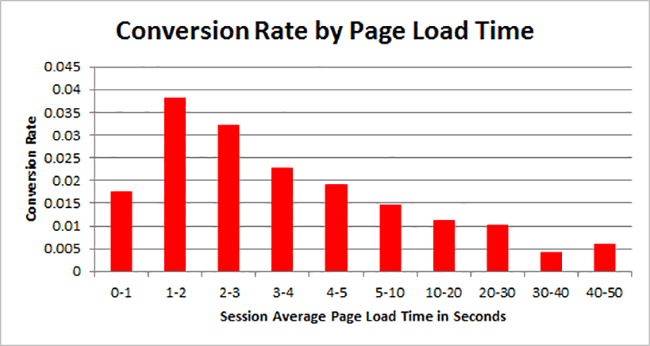
2. Use Data for Better Marketing
Base your marketing activities on black-and-white data and analytics, which can offer objective insight into its effectiveness. If you A/B test copy, imagery and calls-to-action and collect statistics regarding your sales funnel, you’ll be able to fine-tune your content along the way.
3. Don’t Forget After-Marketing
The post-purchase experience is just as important as the other parts of the customer journey. When done well, it keeps your ecommerce brand top-of-mind for consumers. This is why customized packaging, personalized notes, hassle-free returns, and come-back discounts are all examples of after marketing that increase brand recognition and loyalty.
4. Remove Pain Points
When you experienced the customer journey and collected feedback, you probably got a better understanding of the pain points your customers face. If possible, remove those as soon as you can. You may need to update your site so it’s mobile friendly or find a new shipping software system that gives you built-in shipping savings to keep costs low, as examples. The data you already have will point you in the right direction.
5. Make an Impression
According to a study by Oracle, 74% of senior executives see the customer journey as having a direct impact on the customer’s willingness to be a loyal advocate, and 60% believe the customer has more power than they did three years ago. End that first purchasing experience with a bang that makes your brand impossible to forget so the customer journey is wrapped with a nice, neat bow.
The Phases of the Customer Journey
The phases of the customer journey break down to the following: Awareness, Consideration, Purchase, Retention and Advocacy. It can vary slightly depending on who you ask and the industry it describes.
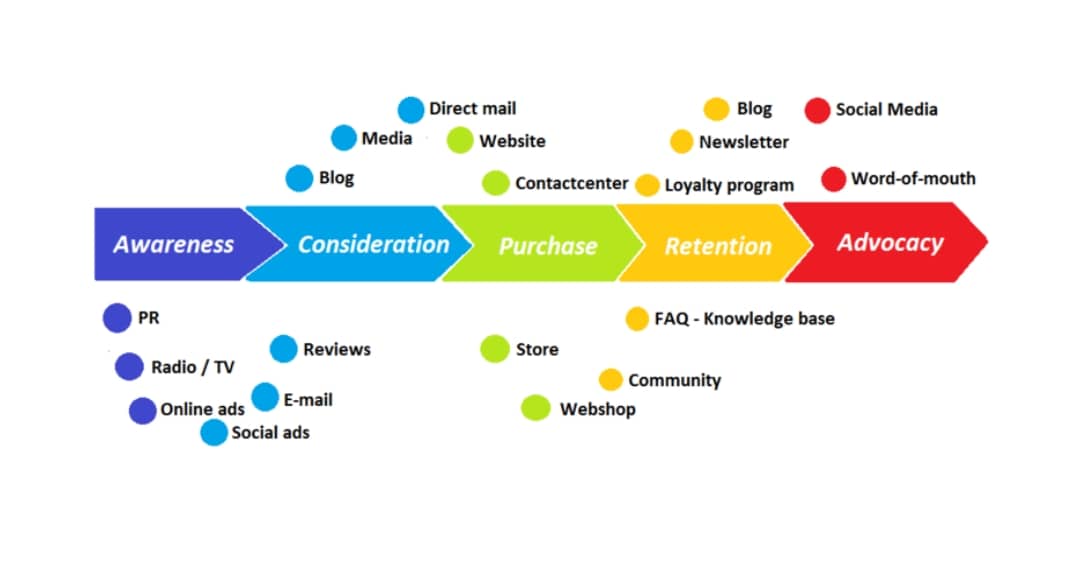
Awareness and consideration are fairly self-explanatory and will consist of your marketing efforts: PR, ads, blog articles and more. These are the pre-purchase touchpoints that shoppers will use on the way to finally making a purchase. Then, the purchase stage happens on your online store. It should be a breeze with intuitive site navigation, snag-free checkout and customizable delivery options to maximize convenience.
That’s when the fun begins. The retention stage is the post-purchase activity that will make or break the customer lifecycle and, if successful, inspire advocacy and a long customer lifetime.
How to Boost Customer Retention
Customer retention is one of your most important goals because it costs far less to sell to an existing customer than to find a new one, and you don’t want your hard work of finding new customers to go to waste.
The truth is that improved ecommerce customer retention strategies can lead to a 10% or more increase in annual revenue. Now that you understand the customer journey and how retention fits into it, it’s time to find some proven tactics to ensure your customers come back time and time again.
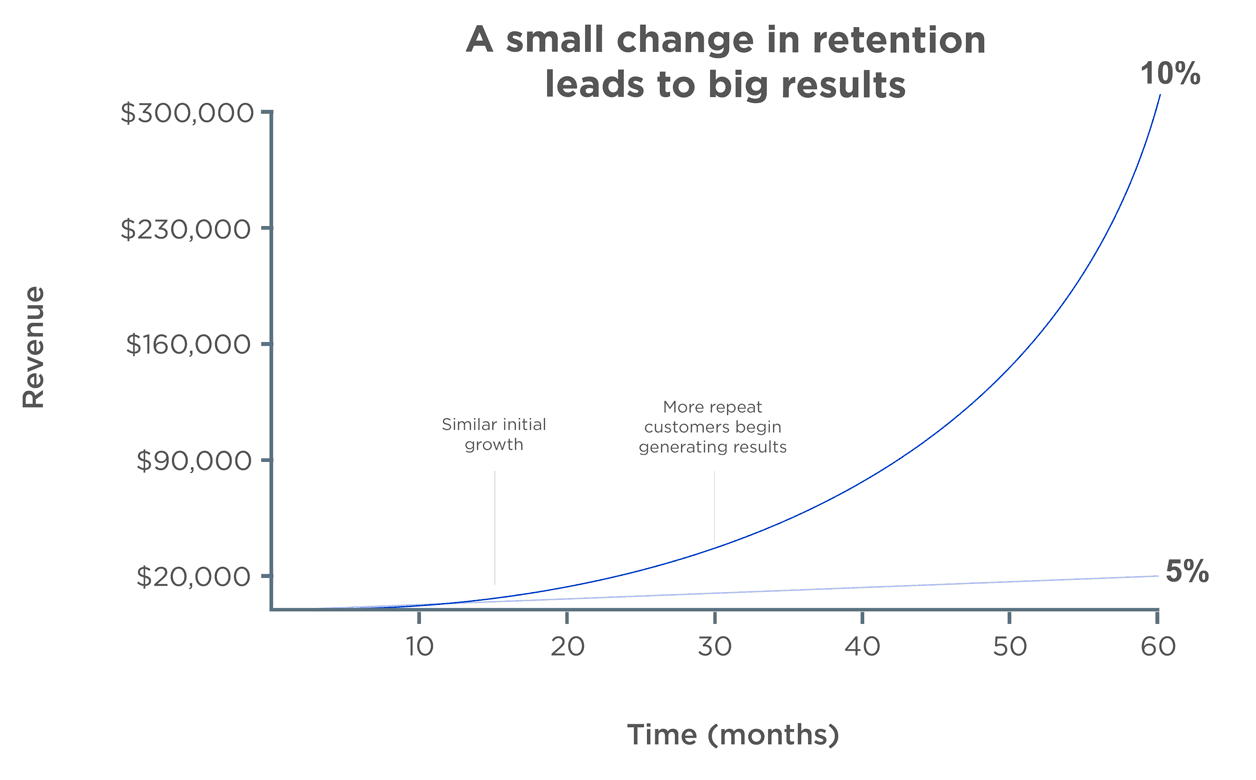
One strategy is utilizing email personalization. These are communications that are more interactive and people-focused, rather than product-focused. Think of a happy birthday email that greets them by name and offers a discount to help them celebrate.
Popular email marketing providers like Mailchimp and Constant Contact make personalization easy so you can reap the benefits, such as these email marketing statistics show:
- Increased open rates (6%)
- Better click-through rates (14%)
- Doubled transaction rates
- Improved interaction (up to 50%)
Finally, online sellers should tap into social media for improved customer retention. Did you know that 71% of shoppers are influenced by social channels? Did you also know that Facebook generates 64% of U.S. buy button referrals or that Instagram’s average referral value is $65!
These are just three social commerce statistics that show it’s a powerful driver of customer retention and loyalty and why it should be a go-to page in your marketing playbook.
Fourth of July Ecommerce Conversion Statistics
Ecommerce conversion statistics give you a snapshot of how effective your strategies are for actually convincing a shopper to make a purchase.
Low conversion rates can be attributed to a forgettable website, weak messaging or the like, whereas high conversion rates tell you that more of your site visitors are buying products. Use these metrics to improve your Independence Day ecommerce sales and beyond, so that every marketing event is a roaring sucess.
- The average ecommerce conversion rate is 1-2%, per BigCommerce.
- Amazon’s conversion rate is about 13%.
- Invespcro found U.S. conversion rates are roughly 2.63% whereas globally they’re 4.31%.
- Users who are retargeted to are 70% more likely to convert.
- Display ads get a click-through rate of 0.07%; retargeted ads get a click-through of 0.7%.
- Retargeted ads have the potential to increase branded search exposure by more than 1,000%.
- 46% of online marketers believe that retargeting is grossly underused.
- 49% of major brands have now set aside specific budgets just for retargeting.
- Social sharing and purchases can increase website traffic by 8.5%.
- Nearly 79% of shopping carts are abandoned.
- Conversion rates can improve by 300% with CRM in place.
The Sale Is Just the Start
Too many ecommerce sellers see customers as numbers that drive sales. These businesses never bother to cultivate relationships or try to improve the customer experience, which is why they don’t succeed in the long run. They end up spending far more on marketing trying to capture new customers, and they have low conversion rates because they never researched how to improve the customer journey.
There are clear benefits of investing in your online store’s customer journey. Customers want to have positive experiences while shopping online and will buy from the brands that provide them, and they’ll want to recreate those positive experiences in the future. Loyalty comes naturally, and everybody feels like they’ve won.
Today, shoppers start buying earlier than ever before, which means ecommerce retailers can start preparing earlier than ever before. Planning is essential when it comes to ecommerce holiday marketing. This is one industry where the early bird really does get the worm.
By taking the tips in this post and putting them into play in July and throughout the summer, you can avoid the holiday preparation rush and boost your sales throughout the peak shopping seasons and beyond.
Share On:








